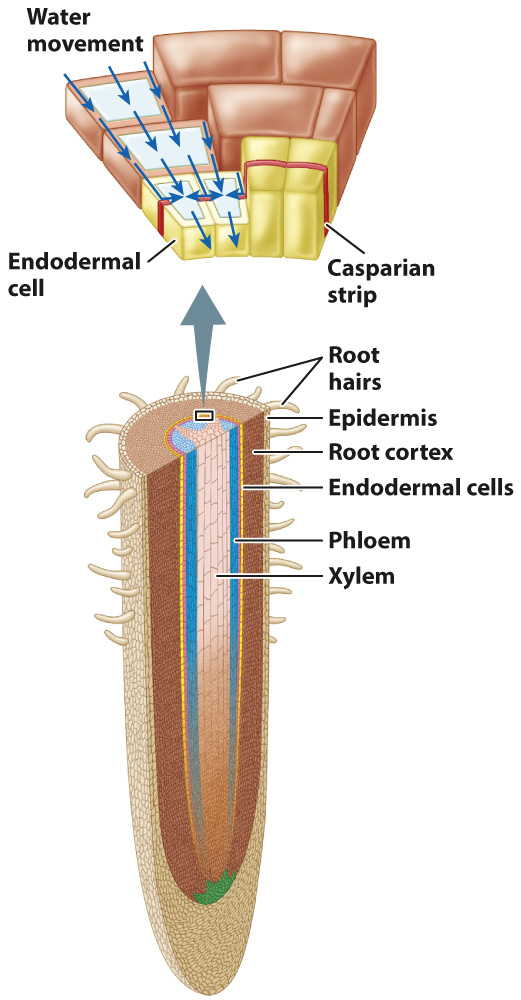Nutrient uptake by roots is highly selective.

Nutrients dissolved in water from the soil enter roots and are transported from the roots to the rest of the plant in the xylem. Xylem, however, is never in direct contact with the soil. The living cells that surround the xylem allow roots to exert a high degree of selectivity over which nutrients move from the soil into the xylem. Thus, the mineral nutrient composition of the water in the xylem differs markedly from that of the water that can be easily extracted from the soil. Some elements, for example nitrogen and phosphorus, are more concentrated within the xylem, whereas others, for example sodium and calcium, are more abundant in the soil solution. Given that water travels in a continuous pathway from the soil to the leaves, how are roots able to concentrate some nutrients and exclude others?
Like leaves and stems, roots have an outer cell layer of epidermis (Fig. 29.17). Epidermal cells near the root tip produce slender outgrowths known as root hairs. Root hairs greatly increase the surface area of the root available for absorbing nutrients. Inside the epidermis is the cortex, composed of parenchyma cells. Depending on species, the cortex can vary in thickness from a single cell to many cells. Xylem and phloem are located at the center of the root and are surrounded by the endodermis, a layer of cells that acts as a gatekeeper controlling the movement of nutrients into the xylem.
Water flowing across the epidermis and the root cortex can travel through the cells, crossing plasma membranes, and can also flow through the relatively porous walls that surround each cell. At the endodermis, flow through the cell wall is blocked by the Casparian strip, a thin band of hydrophobic material that encircles each cell. Water can gain access to the xylem only by passing through the cytoplasm of the endodermal cells.
The Casparian strip allows the root to control what solutes enter the xylem. How does it do that? In order for solutes to pass through the plasma membrane into the cytoplasm, they must be transported by ATP-
High concentrations of salts in the soil make it difficult for plants to obtain water. The reason is that to prevent salt from building up to toxic levels in leaves, plants must prevent salt from entering the xylem. As a result, salt concentrations build up in and around roots. Plants must then pull harder to overcome the osmotic effects of these salts if they are to obtain water from the soil. Poor agricultural practices can lead to salt buildup in the soil and cause crop yields to decline significantly.